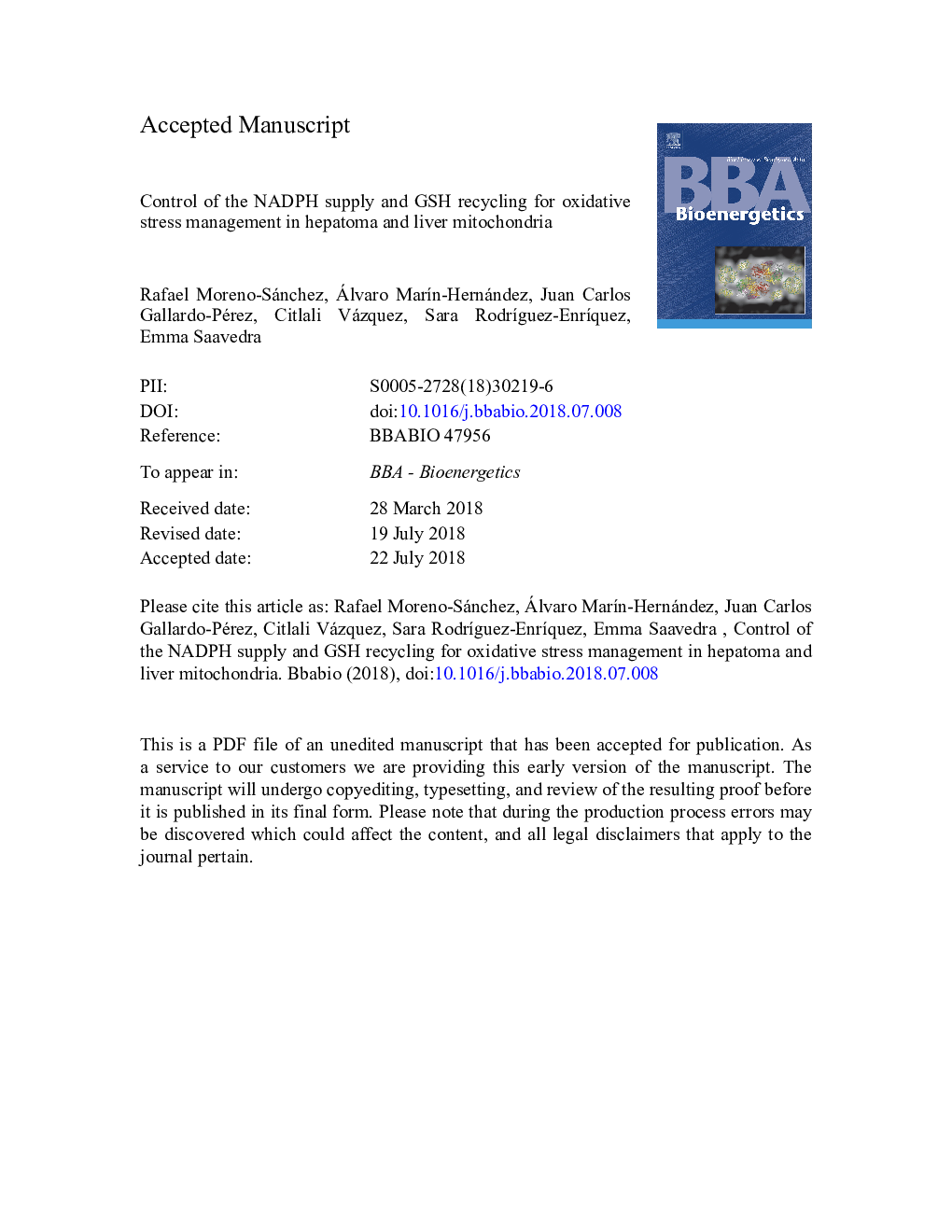| Article ID | Journal | Published Year | Pages | File Type |
|---|---|---|---|---|
| 8949253 | Biochimica et Biophysica Acta (BBA) - Bioenergetics | 2018 | 40 Pages |
Abstract
Kinetic modeling revealed that the oxidative stress management was mainly controlled by GR, GPx and IDH. Modeling and experimentation also revealed that, due to their higher IDH-2 activity and lower GPx activity presumably by acetylation, HepM (i) showed higher steady-state NADPH levels; (ii) required greater peroxide concentrations to achieve reliable steady-state fluxes and metabolite concentration; and (iii) endured higher peroxide concentrations without collapsing their GSH/GSSG ratios. Then, to specifically prompt lower GSH/GSSG ratios under oxidative stress thus compromising cancer mitochondria functioning, GPx should be re-activated.
Keywords
TrxRHepMGSH-S-transferaseGlutathione peroxidase-4GPx-1GPx-4RLMRHMGSH-tGSSGGDHCHPGSHGSTMAL2-OG2-oxoglutarateROSmalic enzymeisocitrate dehydrogenase 2nicotinamide nucleotide transhydrogenasethioredoxin reductaseOxidative stressmalateKinetic modelingRat heart mitochondriaRat liver mitochondriacumene hydroperoxidereduced glutathioneMetabolic controlGluoxidized glutathioneglutathione reductaseglutathione peroxidase 1glutathione peroxidase 4glutamateglutamate dehydrogenaseReactive oxygen species
Related Topics
Life Sciences
Agricultural and Biological Sciences
Plant Science
Authors
Rafael Moreno-Sánchez, Álvaro MarÃn-Hernández, Juan Carlos Gallardo-Pérez, Citlali Vázquez, Sara RodrÃguez-EnrÃquez, Emma Saavedra,
